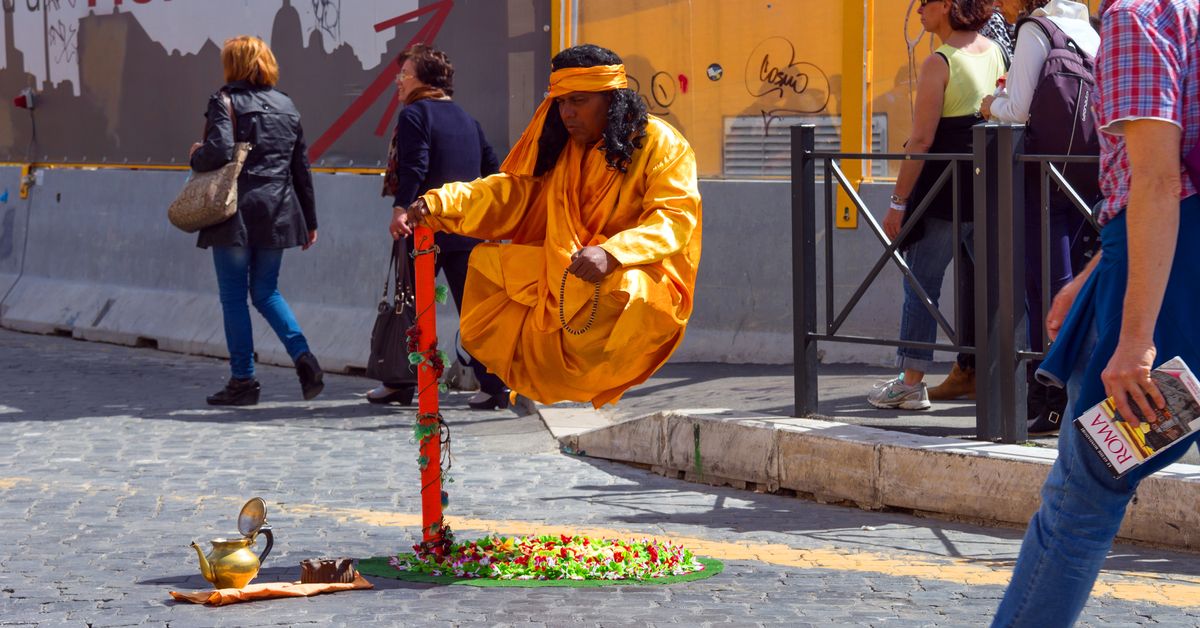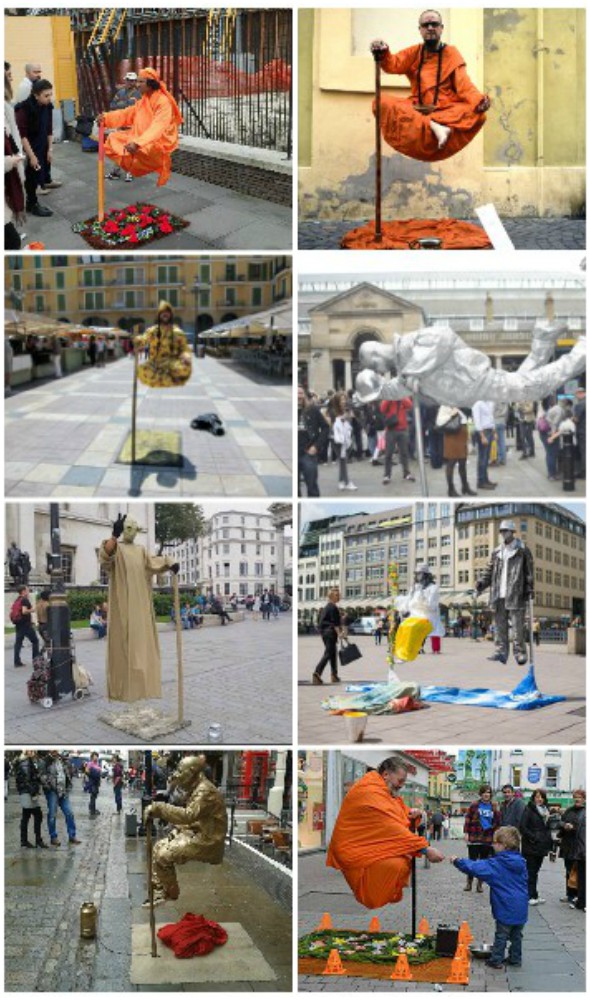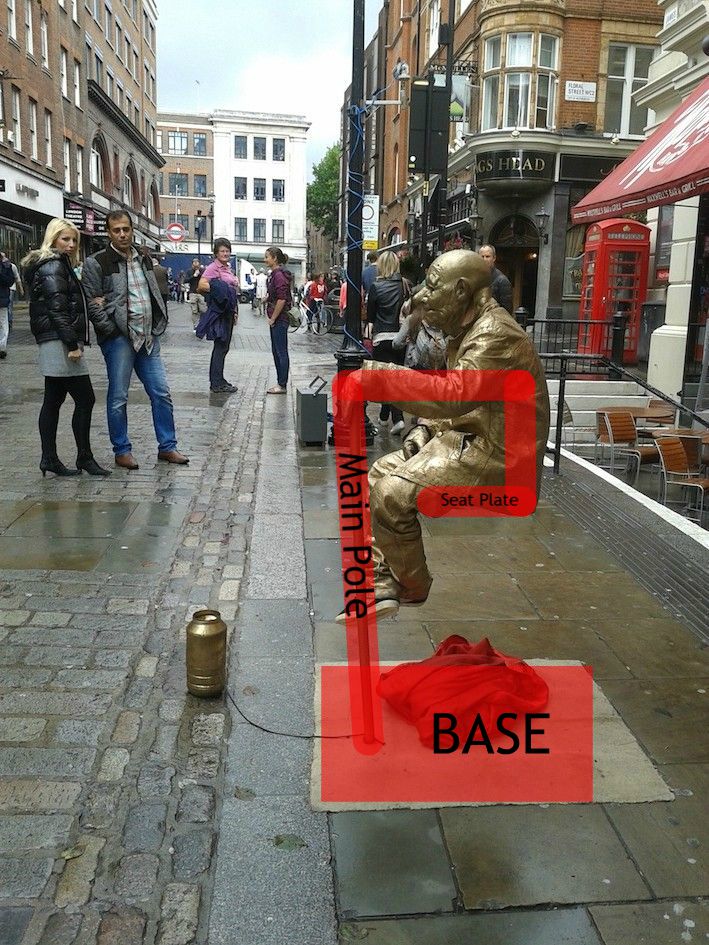In March 2018, a video purportedly showing a street performer "levitating," one of many, was shared nearly a million times on Facebook. Although most viewers were aware that this woman is not actually harnessing some sort of dark art in order to make her float in midair, many were still curious about how she managed the appearance of levitation with such ease.
The viral Facebook video can be viewed here. Another video can be viewed below:
The trick performed in this video is actually a well-known optical illusion that has been performed by a number of magicians for more than a century. Viewers may be amazed at the optics of the trick when witnessing a single performer, but when these levitating illusionists are viewed in a group, it's clear that something is afoot:
Every one of the levitating street performers that we have encountered have used some sort of cane or pole in their trick. These support systems are disguised in various ways, but they all serve the same purpose — to lift the performer off the ground. These poles are installed in some sort of base (which is hidden in some manner underneath a carpet, cloth, or rug) and connect to a support system that is carefully threaded through the magician's sleeve.
Here's a simple diagram of how one trick might have been set up:
As this trick is often performed in the public square, these illusionists have to set up and take down their tricks in plain view of tourists and other passersby. This has given many people the opportunity to reveal the secrets behind this levitating ruse:
This trick has become popular among street performers in recent years, but it dates back to at least the late 1800s, when John Nevil Maskelyne performed a similar trick in London's Egyptian Hall. Harry Keller later modified Maskelyne's illusion (there are different accounts about how he came into the plans for the illusion) to make it more mobile for his touring act:
An important part of every year was Kellar's annual summer trip to London's Egyptian Hall. One year he watched Maskelyne do the best levitation he'd ever seen. Although Kellar already performed a levitation, he wanted something more baffling and unforgettable.
He attended many shows at Egyptian Hall and studied the stage carefully, but he couldn't figure out the details of Maskelyne's levitation. Maskelyne refused to reveal its seret. Harry's solution was to hire someone who knew how the illusion worked.
A German magician, Paul Valadon, had performed at the Egyptian Hall for five years. In 1904, Kellar invited Valadon to join his show. After Valadon described the mechanism behind the illusion, Harry made changes to it. Unlike Maskeleyen, who performed every night in the same theater, Harry had to move the illusion as he toured. That meant adjusting the equipment so that it could easily be taken down and set up again without breaking.
These magicians, too, used some sort of support system hidden from the audience's view to create the illusion of levitation.


